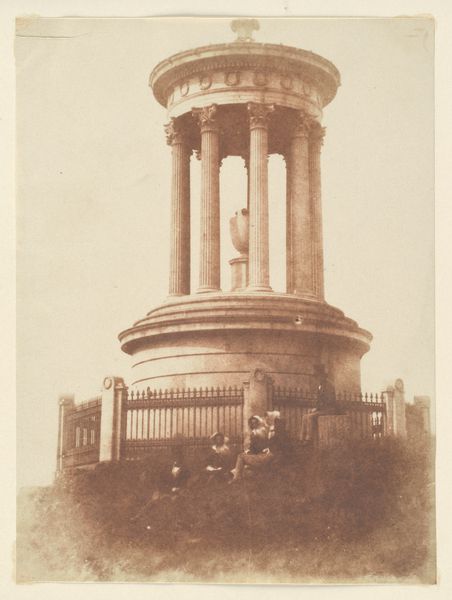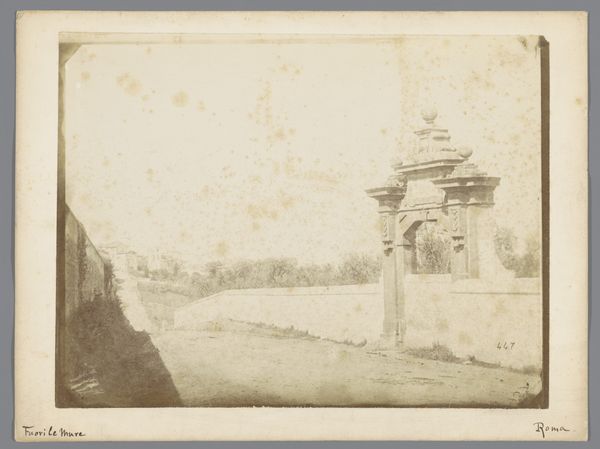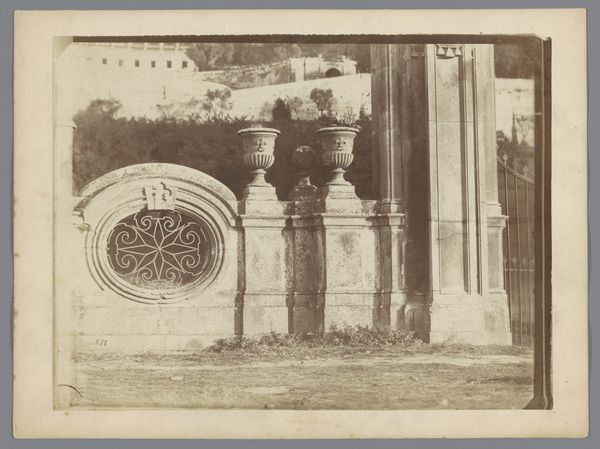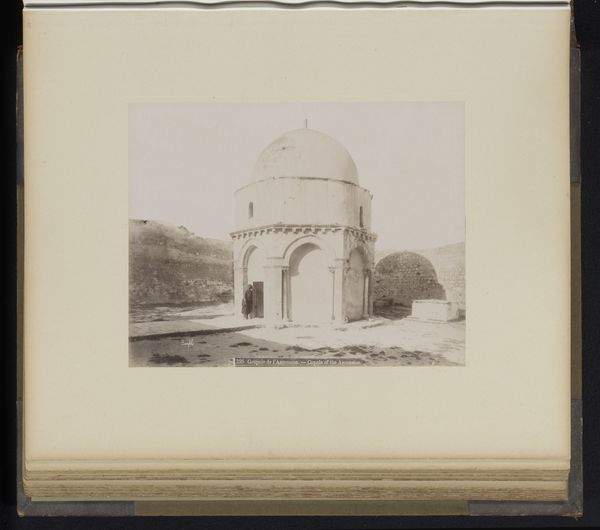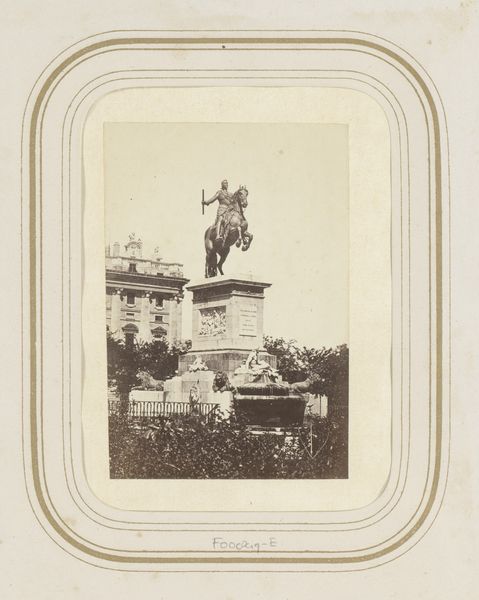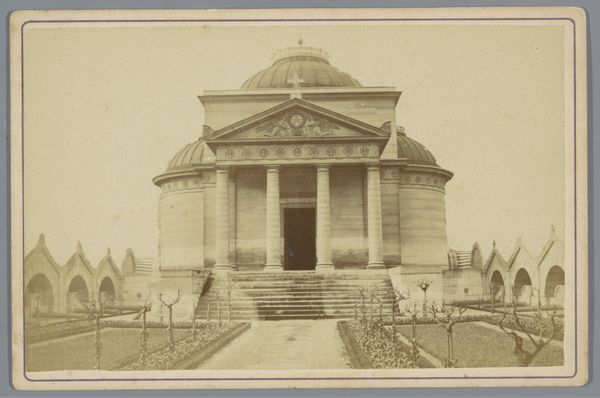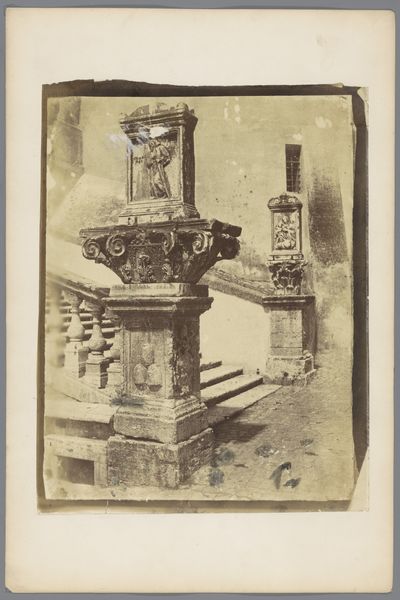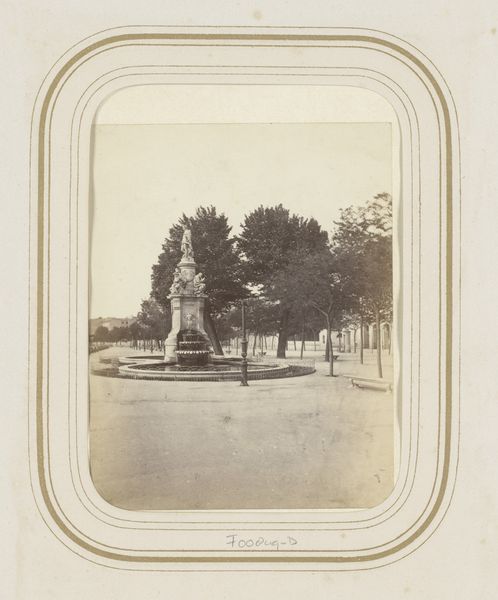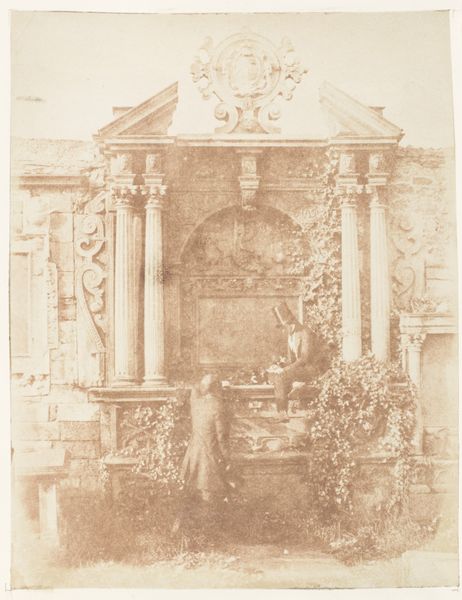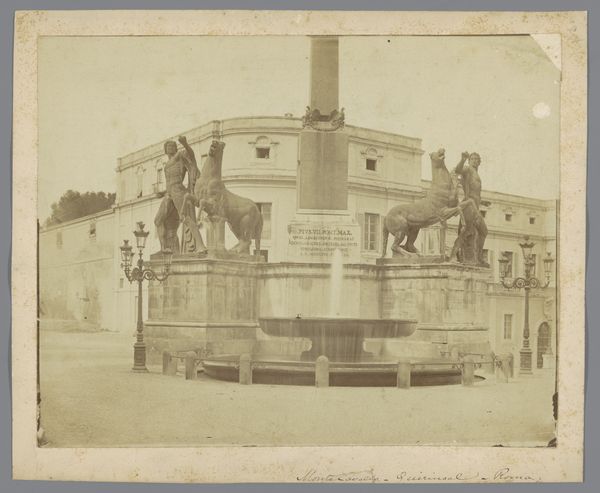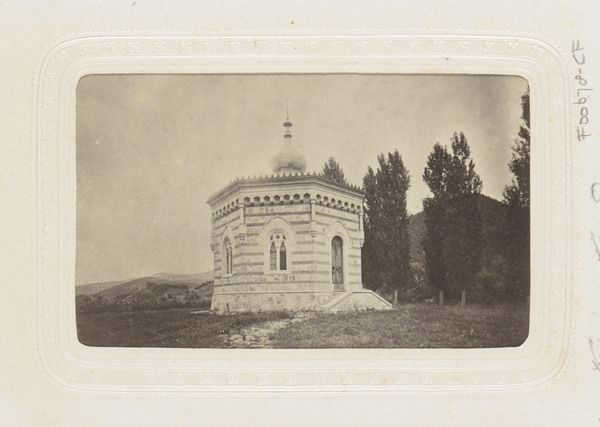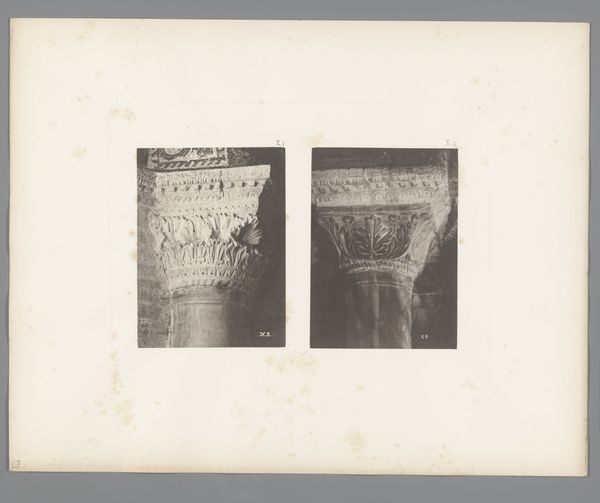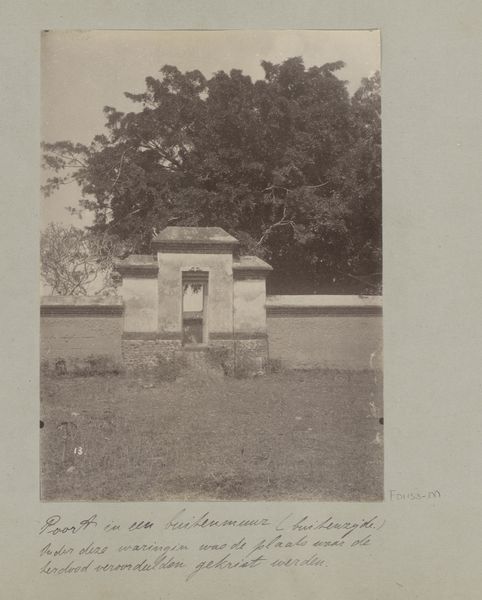
daguerreotype, photography, architecture
#
water colours
#
landscape
#
daguerreotype
#
photography
#
romanticism
#
arch
#
scottish-colorists
#
architecture
Copyright: Public Domain
Curator: Hill and Adamson’s daguerreotype, “Edinburgh. Greyfriars’ Churchyard,” created between 1843 and 1847, presents us with a quietly haunting vista. Editor: That it does! My immediate impression is of faded grandeur; there’s a profound stillness, a muted monumentality despite the image's modest scale and its limited sepia palette. Curator: Indeed. Notice how the dome, with its classical entablature, establishes a vertical rhythm disrupted only by the slight dome at the top. Also consider how light skims across the stone surface, softening its stark edges, while simultaneously emphasizing the geometry and creating gradations in tonality. Editor: And I’m drawn to the motifs—the dome itself acting almost as a secularized baldachin, a marker of significance, protecting the memories within this burial ground. Its eroded surface only enhances the feeling that time is relentless, even against stone. Curator: A powerful tension is developed through the symmetry of architectural construction against the asymmetries in the light, creating a kind of structured randomness that gives the piece its feeling of natural, inevitable entropy. The romantic style comes from an asymmetrical realism as the world degrades under natural laws, yet with a formal structure giving it lasting dignity. Editor: It’s that interaction which feels especially compelling: the tension between designed memorialization and inevitable decay. The churchyard acts as a container of cultural memory, its architecture striving against, yet also surrendering to, the march of time and loss. Even though there aren’t figures presented to us in clear view, there is an acknowledgement of life passing within a constructed setting. Curator: This captures precisely that moment when photography itself was wrestling with the formal structures of painting while grappling with the scientific imperative to capture an objective reality. In its tonal gradations, one perceives not only aesthetic consideration but a negotiation between material actuality and artistic expression. Editor: An especially insightful thought. Seeing this artwork through a lens emphasizing both formal qualities and symbolic meanings certainly enhances its compelling emotional depth. Curator: It makes visible to us how photography continues to both present and represent our reality in equal measures, in structured artistic composition.
Comments
No comments
Be the first to comment and join the conversation on the ultimate creative platform.
